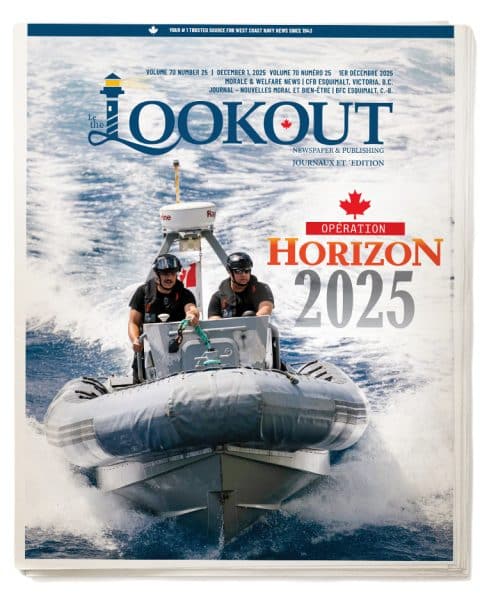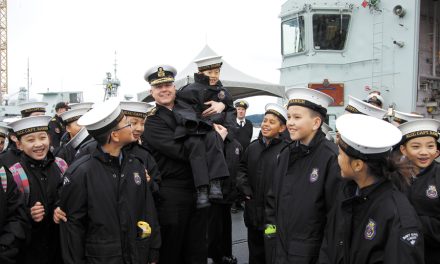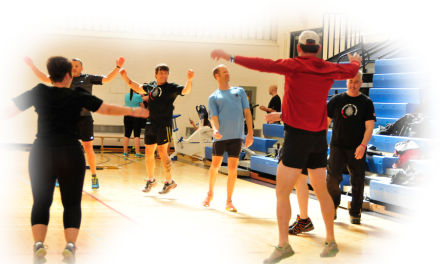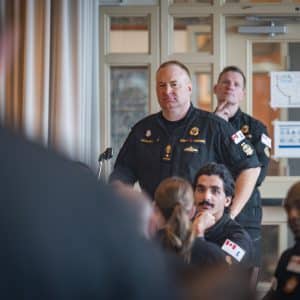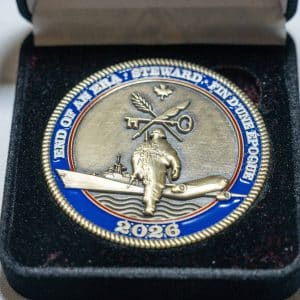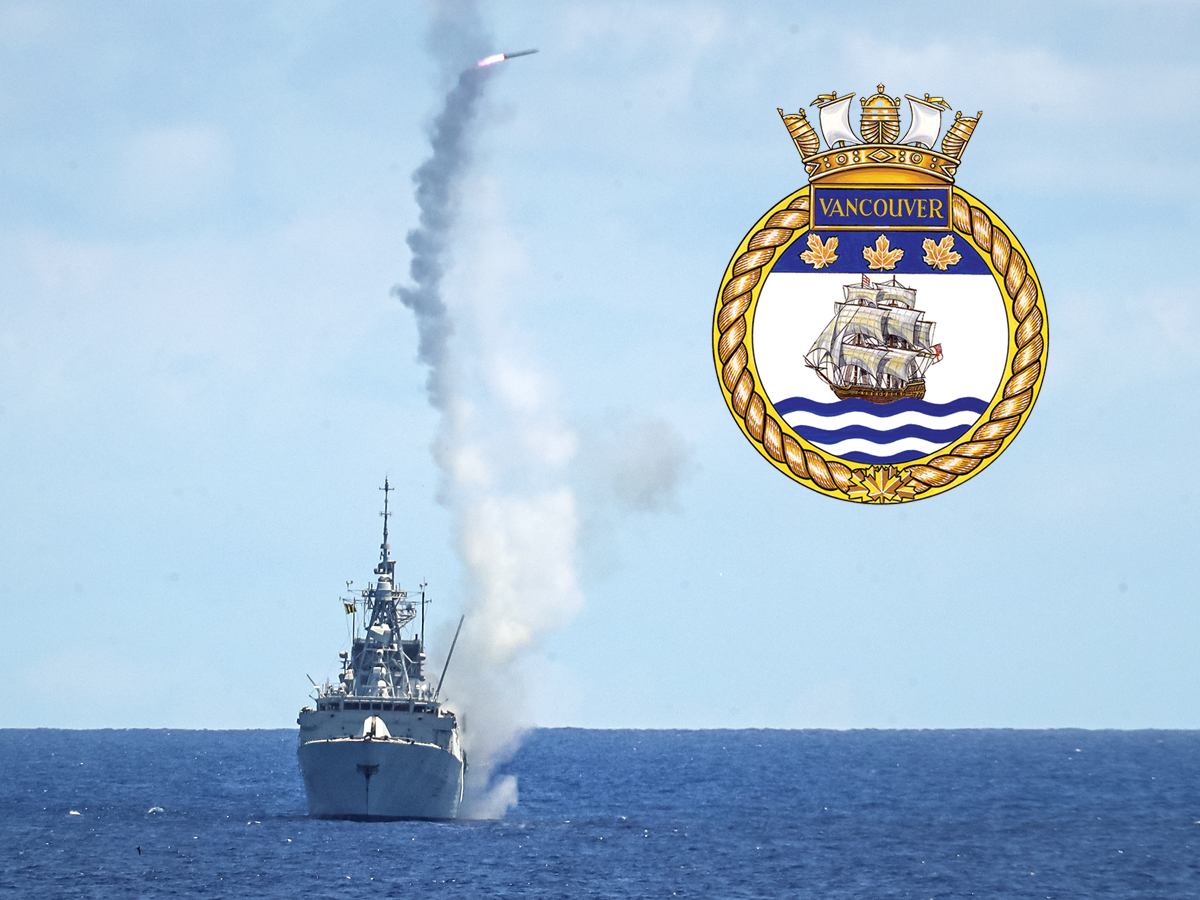
Pedram Mohyeddin,
Public Affairs Officer, HMCS Vancouver
—
Morale was running high in His Majesty’s Canadian Ship (HMCS) Vancouver as their time in and around the Hawaiian Islands came to an end at the beginning of August. For a little over five weeks, HMCS Vancouver took part in Exercise Rim of the Pacific (RIMPAC) 2024 from Jun. 27 to Aug. 1, along with HMCS Max Bernays and Motor Vessel (MV) Asterix.
Belonging to the fictional nation of Orion, Canadian ships took on another persona. Featuring a new national anthem and patriotic posters around the ships, this new nation would define their role within the exercise.
Comprising of just one tenth of the entire RIMPAC at sea force, Orion was the simulated opposing force played by the Royal Canadian Navy (RCN), along with two American ships and one Japanese ship. As an aggressive force, it was their job to aggravate their enemy of RIMPAC coalition ships in a simulated war game that put common allies against each other to test their readiness.
As the world’s largest international maritime exercise hosted every two years by the United States Pacific Fleet, RIMPAC is more than just a singular training exercise – it’s a unique platform for increasing communication and interoperability among the fleets.
“We are here to build relationships and show our commitment,” said Commander Tyson Bergmann, Commanding Officer of HMCS Vancouver.“ Canada has set out to increase its participation in multinational training exercises and to engage regional partners and militaries to promote peace, resilience, and security.”
RIMPAC is split into two phases: the shore phase, taking place in the first week; and the sea phase, which lasts approximately four weeks.
One of the main purposes of the shore phase is to allow the planners of the exercise, along with the ships, to meet and discuss the final planning stages of the exercise. There are specific medical and legal symposiums that allow members from participating nations within those occupations to connect and share ideas for professional development. The shore phase is also a time of cultural exchange where each night a different country hosts a reception displaying their food, culture, and hospitality.
The sea phase consists of a variety of naval activities from crew exchanges to missile shoots. HMCS Vancouver was able to successfully fire both its MASS system, an anti-ship-missile system, and two of its Evolved SeaSparrow Surface to Air Missiles. Concurrently, MV Asterix conducted a total of 34 replenishments-at-sea, the most out of all replenishment vessels at RIMPAC. That included 16 different vessels from nine nations – Canada, Australia, Germany, Italy, Japan, New Zealand, Republic of Korea, Singapore, and the United States. It was the first time that MV Asterix had ever conducted a replenishment-at-sea with ships from Italy and the Republic of Korea. The operation tempo was so high that for one 48-hour period, MV Asterix conducted seven replenishments-at-sea. They also conducted their largest ever ammo transfer to, none other than, HMCS Vancouver.
“The Vancouver crew displayed the kind of professionalism for which the RCN is known, and I have no doubt they will continue to do so during Operation Horizon,” says Commander Bergmann.
RIMPAC 2024 is the 29th iteration of its kind that began in 1971 with just five countries: Australia, Canada, New Zealand, the United Kingdom, and the United States. This year, 29 nations, 40 surface ships, three submarines, 14 national land forces, more than 150 aircraft, and 25,000 personnel participated in RIMPAC.
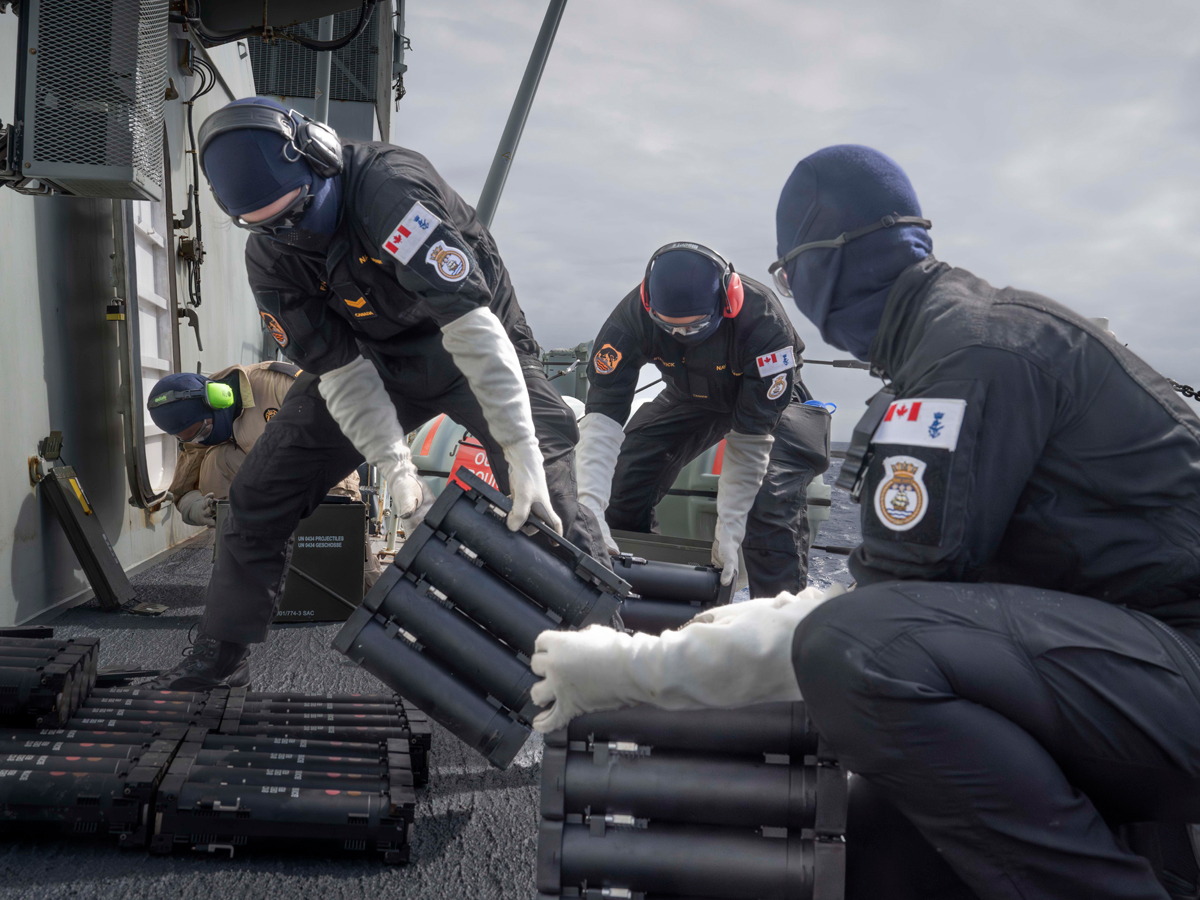
Sailor 1st Class Dean Fisher (Left), Sailor 3rd Class Ryan Stalwick and a Royal Canadian Navy member aboard HMCS Vancouver prepare to reload the multi-ammunition soft-kill system launcher (MASS) during the Technical Cooperation Program Anti-Ship Threat Project Arrangement (TAPA) 2024 while at sea. TAPA is performed every two years, which allows for the testing and training of electronic warfare technology and tactics. Photos: Aviator Conor R.G. Munn, Canadian Armed Forces Imagery Technician.
